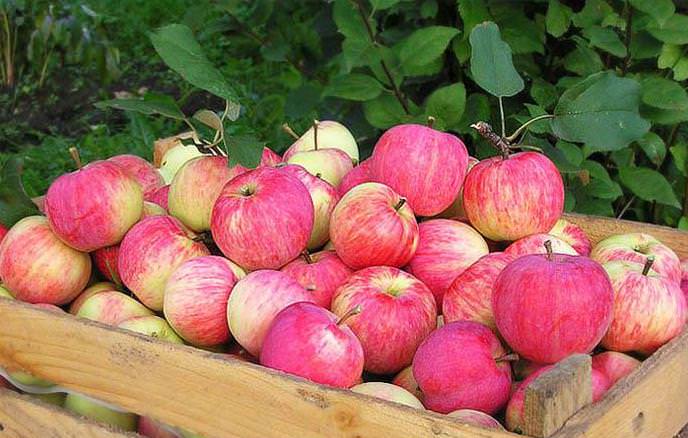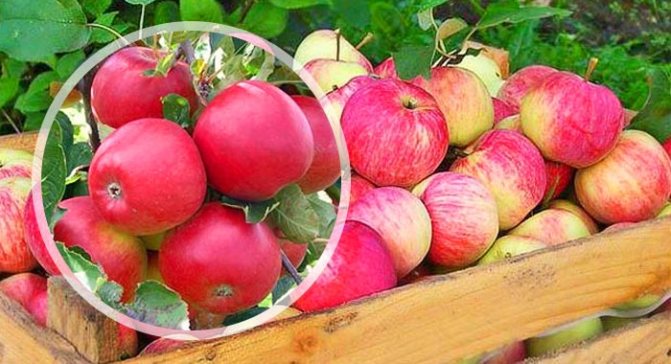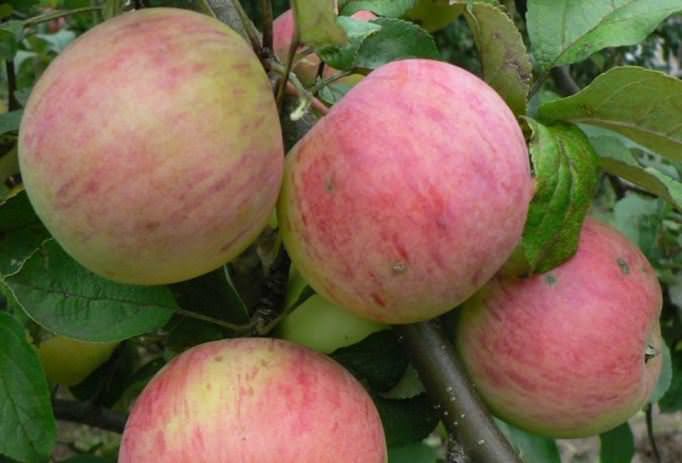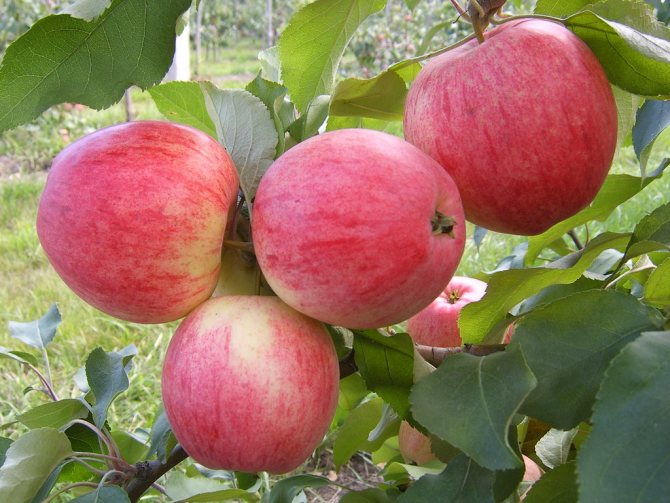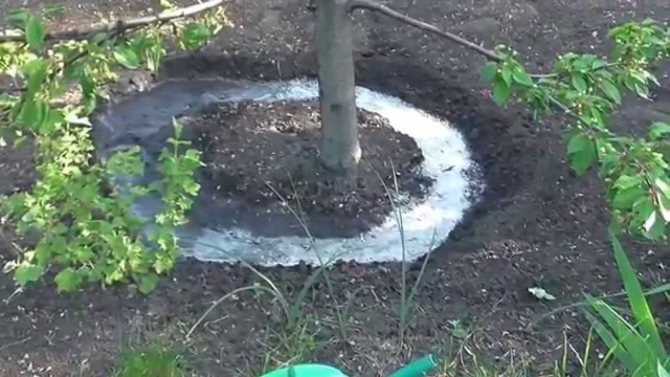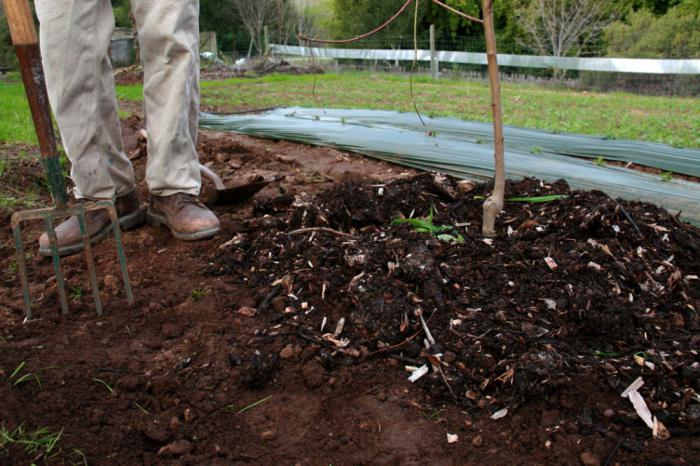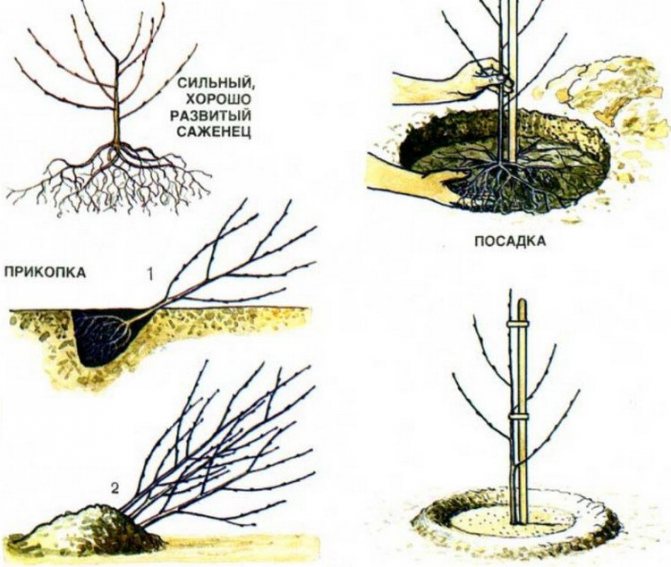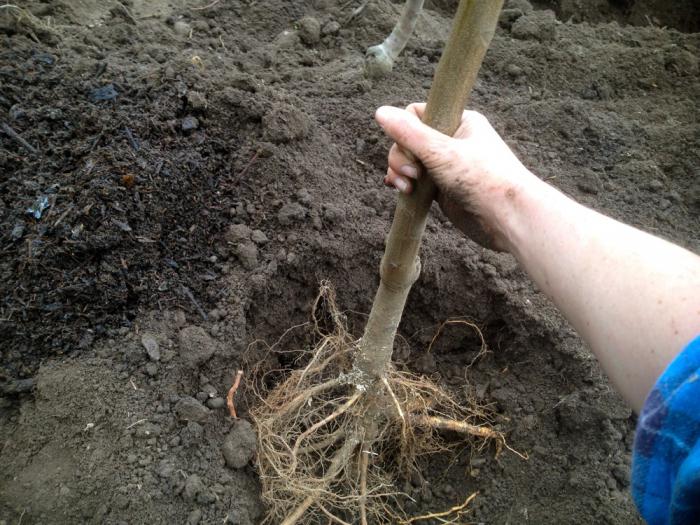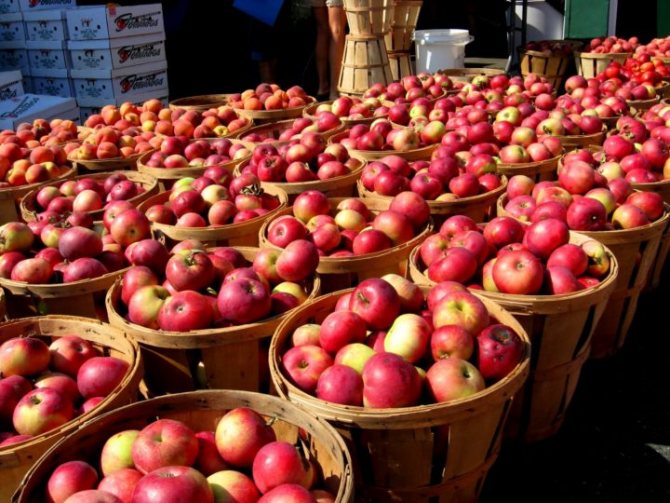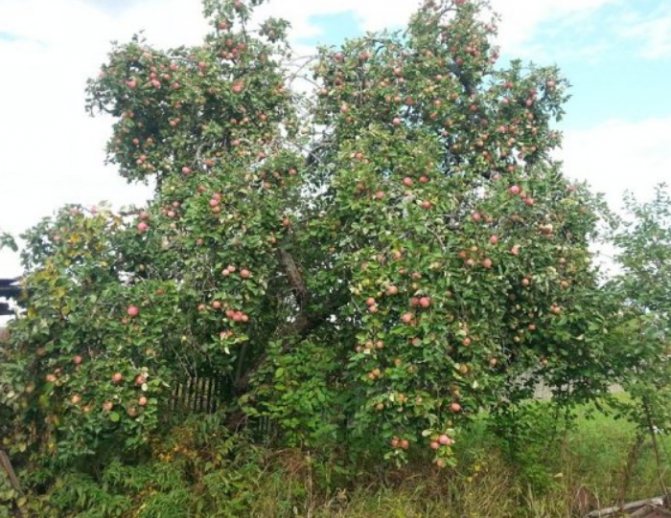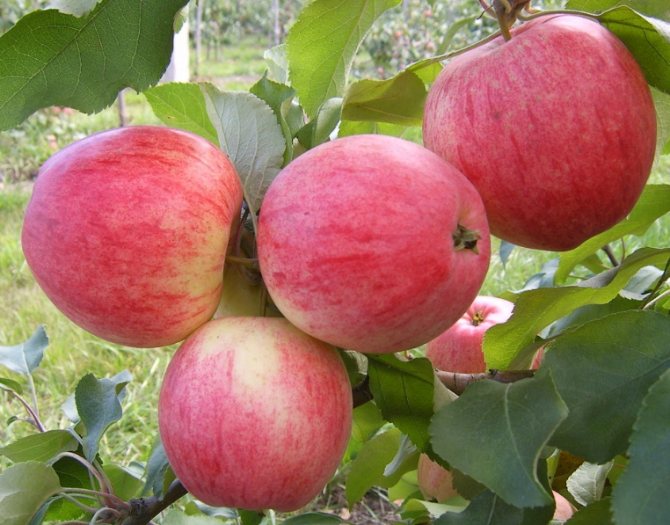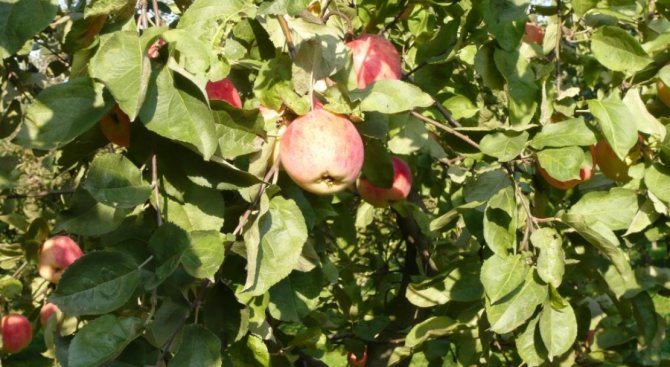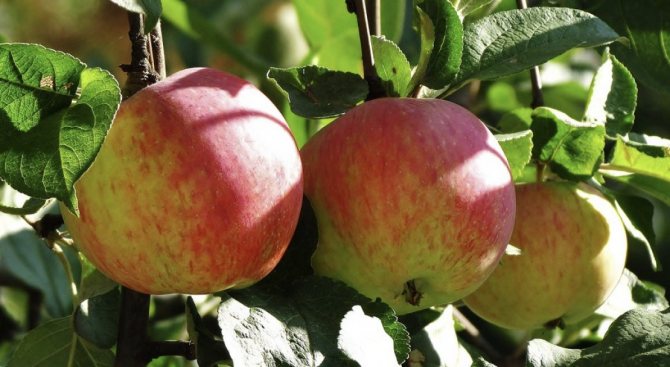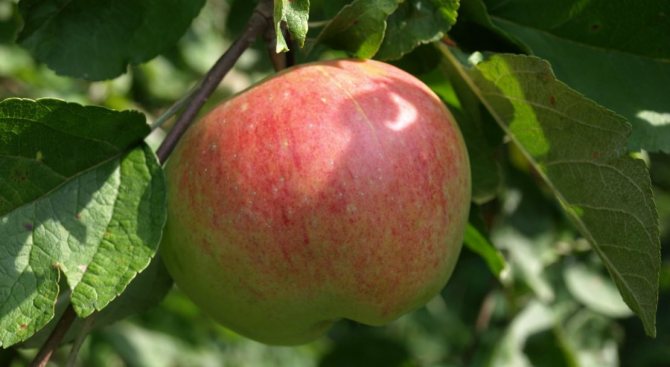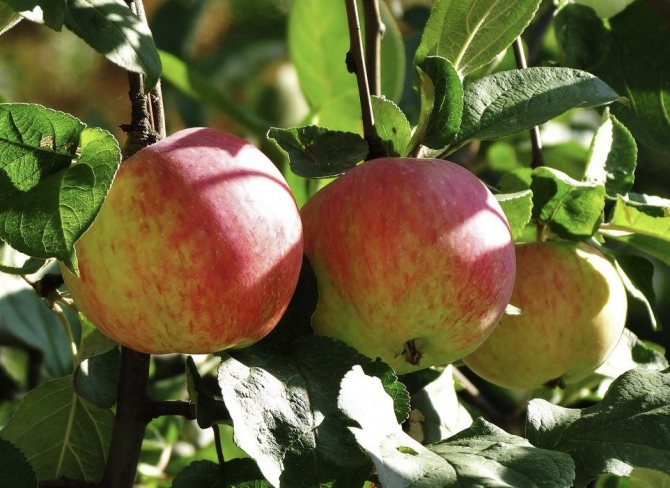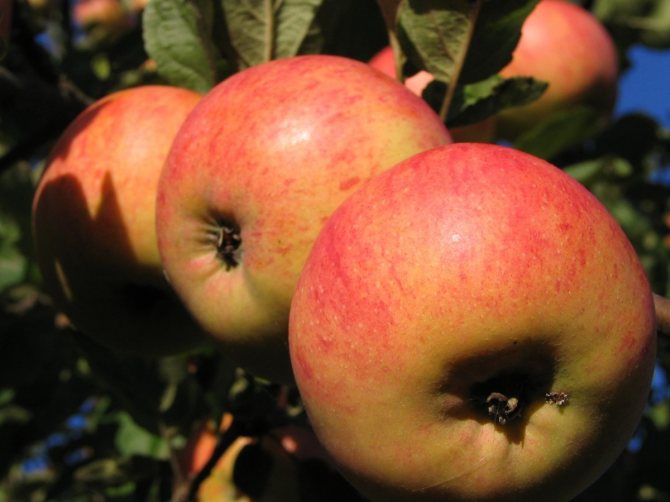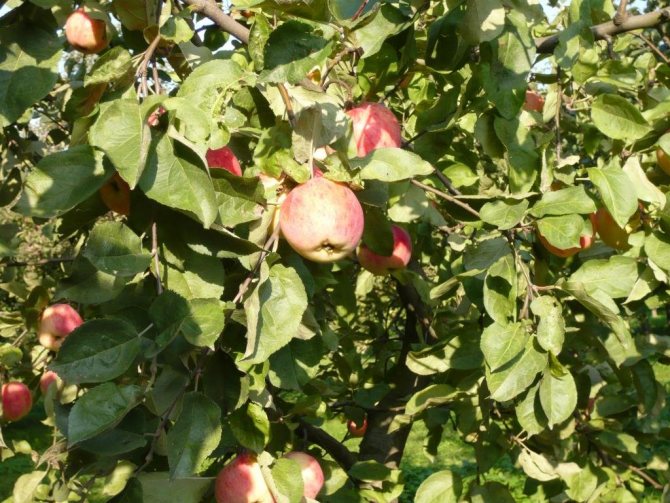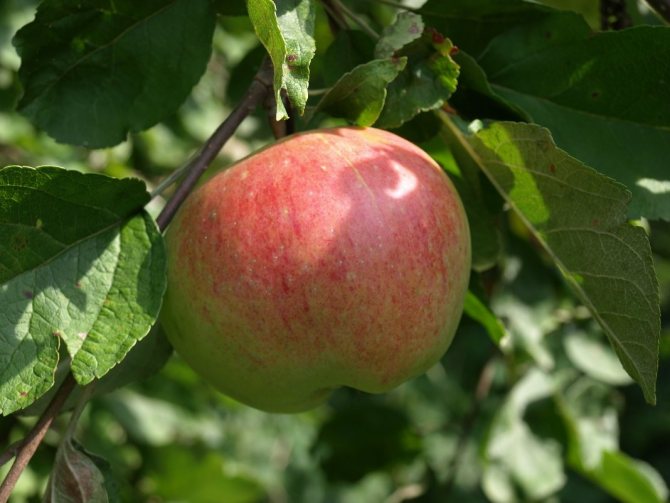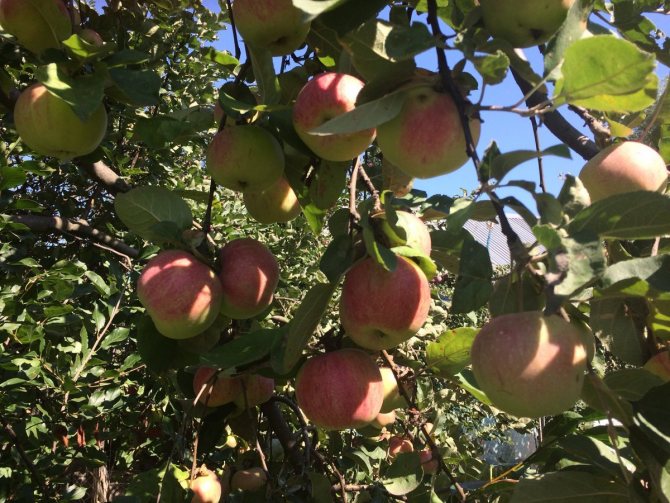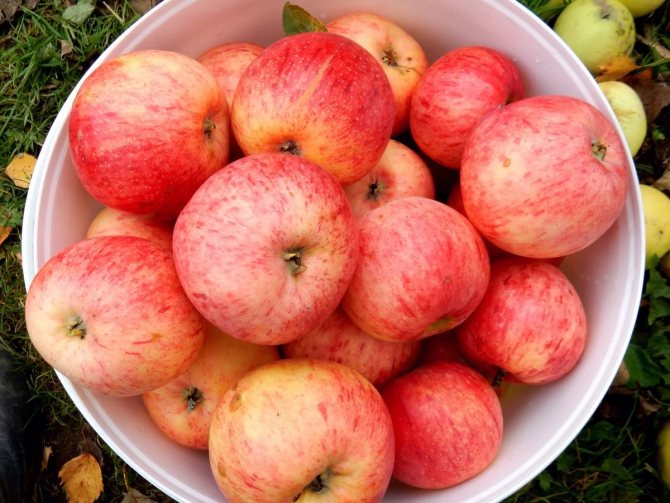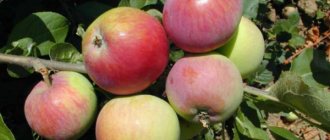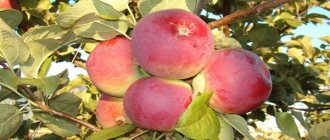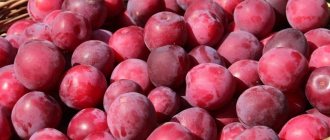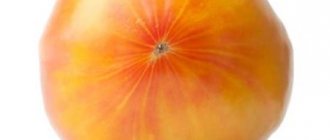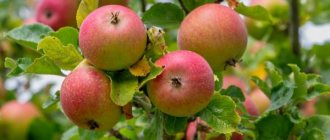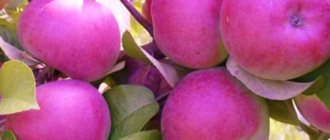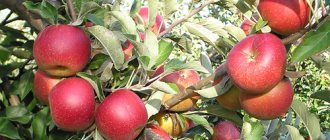Apple tree "Shtrifel": variety description, photos, reviews
The apple tree Shtrifel has been growing at my dacha for more than a dozen years. Thanks to this tree, I make a large number of seams, distribute apples to all relatives and neighbors, and even manage to leave them for sale. And how to grow such a wonderful tree for you, I will tell you in this article.
Many adults know the unsurpassed taste of the Strifel apple since childhood, but not everyone knows that this variety came to our country from Holland. Many experienced gardeners refer to these apples as autumn striped apples. What is the reason for such popularity of this variety?

Description of the variety
Apples of this variety, undoubtedly, have not only an attractive appearance, but also excellent taste characteristics. Despite the excellent characteristics of the fruit, the tree itself has the same.
This tree is distinguished by its strength and beautiful spreading crown. The plant reaches a height of 9 meters. The tree is a real giant and therefore displaces other trees and plants from its territory. Such an apple tree is easy to care for, does not have special requirements for the climate.
A stripe can be found in areas of southern latitudes and in Siberia. Low temperatures are not terrible for this tree. Even if the crown is damaged, then its complete renewal will occur in a few years.
Throughout the growing season, the plant tries to grow more and more new shoots. As the tree grows, they need to be thinned periodically, otherwise the crown will clog too much.
Thinning the crown will increase yields and additionally become a prophylaxis against various diseases and pests.
The branches of the apple tree are so strong that they easily hold the entire crop, which can reach 450 kg. During the flowering period, the plant is covered with numerous white or pinkish flowers. You can get the first fruits 7 years after planting.
Before you get your first apples, you need to properly crown and take care of the trees. The first few fruits for the sample will appear in 4 years, the average weight of such a fruit is about 80 grams.
The shape of the apple is round, the color is green-yellow, and along the entire skin there are beautiful red stripes, which is why the people called it autumn striped.
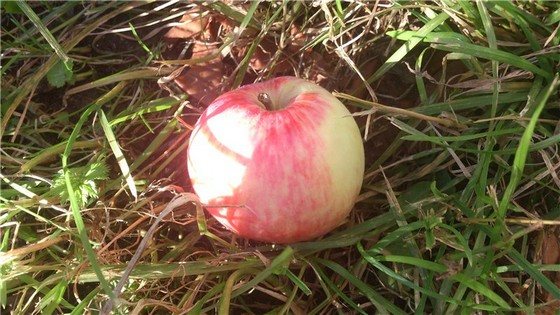

Advantages and disadvantages of the variety
The genetics of this variety are imperfect. With modern varieties, this old variety cannot compete, since it does not have any particular resistance to diseases, and the fruits do not last long. Despite this, Shtrifel is in great demand and has its many advantages:
- Extremely high yield;
- Unsurpassed fruit taste;
- Trees are resistant to winter cold and frost;
- The fruits tolerate transportation well;
- After processing, apples do not lose their taste.
Before planting this variety of apples, determine for yourself its advantages and disadvantages and think about where you will send a huge harvest.


Gardeners reviews
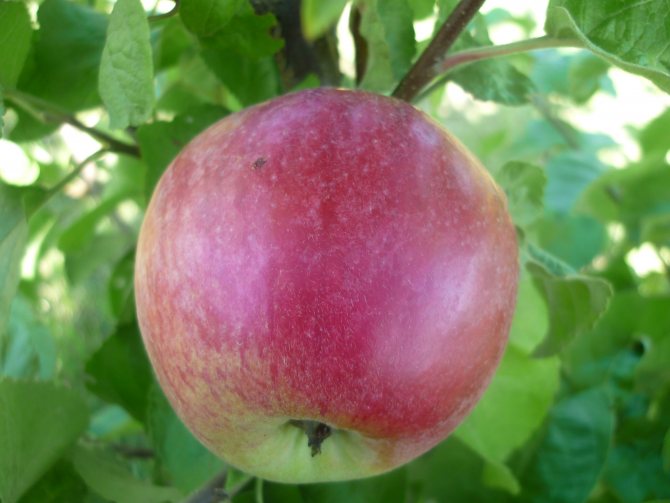

Both professionals and amateurs note in their reviews the excellent taste of Strifel apples, excellent presentation, good preservation and transportability.
The long life of trees, despite the late onset of fruiting, allows for high yields from one tree for tens of years. With good watering and proper pruning, apple trees delight gardeners with an abundance of fruits for many years.
Growing rules
In order for the plant to take root better, it should be planted in the spring. Determine the site before planting. Remember that the tree is very large, make sure that the giant does not shade other plants, does not interfere with them and other buildings on the site.
For planting, it is better to use black earth soil, or loamy. Before planting, you have to make a large planting hole, fill it with minerals and nutritious soil.
Immediately after planting, and the entire growing period, you need to water the apple tree regularly and abundantly. In especially dry periods, the tree needs about 100 liters of water per 1 square meter in the trunk circle.
When the fruiting period is over, the tree will need potash and phosphorus fertilizers. Thus, you will well prepare the tree for wintering and improve the taste of the future harvest.
Young shoots of the apple tree need to be thinned annually, it is better to do this in spring or autumn. Since the shoots grow at a high speed and in huge numbers, this work will take you a lot of time. The apple tree will reduce its yield after about 20 years, in such a situation it is necessary to carry out deep and abundant pruning in order to rejuvenate the plant.


Planting an apple tree Streyfling
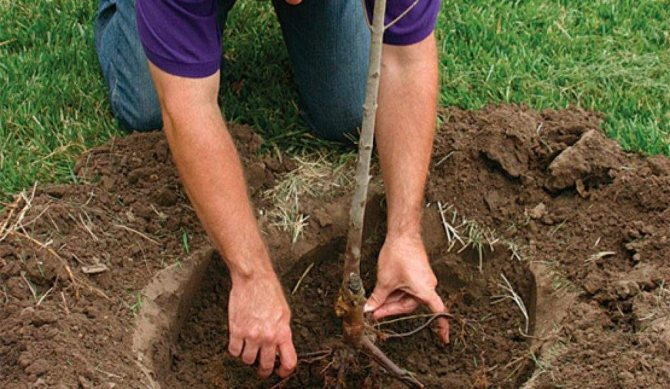

The future fate of your apple tree depends on planting a young seedling - how well it will grow on your site and what kind of harvest it will please.
Choosing apple seedlings for planting
It is believed that two-year-old seedlings take root best. Be sure to inspect the condition of the roots of a young tree - there should be no traces of mold and fungal rot. The roots should be fairly moist, not dry. In case of special furry of different lengths, just trim the roots evenly with pruners before planting.
Planting dates for apple trees
Although apple trees can be planted both in spring and autumn, in the middle lane, spring planting is preferable in order to protect the seedlings from sudden frosts, and to ensure better survival during the summer. In spring, planting work can be started during the period of snow melting and well-warmed soil. In southern latitudes, we recommend planting an apple tree in late August.
Choosing a place for planting an apple tree on the site
For planting a plant that in the future will turn into a powerful and spreading tree, choose places with good solar illumination of an elevation. If you plant several seedlings, then there should be at least 4 m between them, and 5 m between rows.
On what soils does the Streifling apple tree grow
Although the Streyfling apple tree is considered very unpretentious, it has been noticed that it thrives best on loamy, moist soils.
If you are the owner of an area with clay soils, add sand and compost. Peat and humus are introduced into sandy lands to improve the structure.
Planting pit for an apple tree
A week before the planned planting, dig in a certain selected place a hole with a diameter of at least one meter, a depth of 65-70 cm. Set the top fertile layer aside. Thoroughly loosen the bottom layer of the pit, add half of the fertile soil removed from the very top, add fertilizers (superphosphate, compost or humus, wood ash), mix the additives well with the soil in the pit. This fertile mixture of soil and fertilizer should occupy about half the volume of the planting hole.
Algorithm for planting apple seedlings
A week after the planting hole was dug and fertilized, place the seedling in it, install a decent count holder next to it, tie a tree to it and dig in the rest of the earth. Make sure that the root collar is 8 cm higher than the ground level. How to determine the root collar correctly can be found here. Water abundantly and mulch with spruce branches or straw.
Harvest storage and transportation
With a harvest of 400 kg, few people will be able to consume them fresh and in a short time. You will not be able to store these apples for a long time. If you still want to keep your harvest fresh, then you should know:
- Do not wait until the apples are fully ripe and begin to crumble from the tree. Remove the slightly unripe fruit for later storage. Just pick the apples gently from the branch in early September;
- You can store the crop only in a dry wood box;
- Do not store apples that are damaged or with any signs of illness;
- While the crop is being stored, you should regularly inspect it for damage and decay.
Read also: When to plant onions and garlic
It is important to understand that with all the observance of the conditions for the correct storage of the harvest, the Shot, the taste and appearance of the fruits will already greatly deteriorate by December, and they will become unusable for use.
It is better to process or sell it after harvesting, so that valuable fruits simply do not disappear in your cellar. Leave for storage only high-quality copies that have not yet ripened.
In more detail about the apple Shtrifel in the video:
Experienced summer residents, without betraying traditions, still plant this particular variety of apple trees on their plots. They appreciate it for its rich harvest, which can be easily sold at local markets and fairs. Reviews of the Shtrifel variety are mostly positive, there are also disadvantages, but a rich harvest still speaks in favor of this variety.
Subspecies and variants
Breeders are constantly working to improve apple varieties in order to maximize preserve advantages and reduce disadvantages... The Shtrifel variety did not stand aside either.
On a dwarf rootstock


On dwarf rootstocks, fruiting begins already in the third year.
Durability and resistance of the variety to environmental influences preserved in plants on a dwarf rootstock.
They are much easier to care for, and harvesting costs are also reduced.
Apple trees on a dwarf rootstock have earlier dates of the onset of fruiting, but the yield from one tree is lower than that of tall plants. They are less hardy and durable.
Red squeegee
As a result of development, a variety of apple trees appeared - Red Shtrifel.
It has the same quality characteristics as yellow.
Distinctive feature - a more intense red color of the peel of the fruit, corresponding to the name of the shade
Apples covered with a pleasant waxy coating have a good presentation.
The fruits are developing on long stalks and are attached quite tightly, when overripe they are not inclined to crumble.
Columnar
There is no columnar apple-tree Shtrifel. Below we give general information about columnar apple trees.
To accelerate the onset of fruiting and facilitating care by breeders, columnar trees are created:
- They have no side branches,
- Fruit formations (ringlets and twigs) are formed densely along the tree trunk, which reaches a height of 2.5 - 3.0 m.
Ease of caring for columnar apple trees does not always compensate for the lack of harvest compared to traditional cultivar farming.
Apple tree Shtrifel: description, photo, reviews
Many of us are familiar with the taste of Strifel apples since childhood. And few people know that these, such native, juicy and aromatic apples were first bred in Holland, where they received the official name "Streifling". Over time, the variety was brought to the Baltic States, and then spread throughout the post-Soviet space. Today, many gardeners grow these apples on their plots and call them autumn striped apples. So, why are Shtrifel apples so popular, and why hasn't there been a worthy replacement for this variety over the years? The answers to these questions lie in the characteristics of the apples and the tree themselves.In our article we will try to offer a photo, a description of the Shtrifel apple tree and reviews about it.


History of creation, suitable region and climate
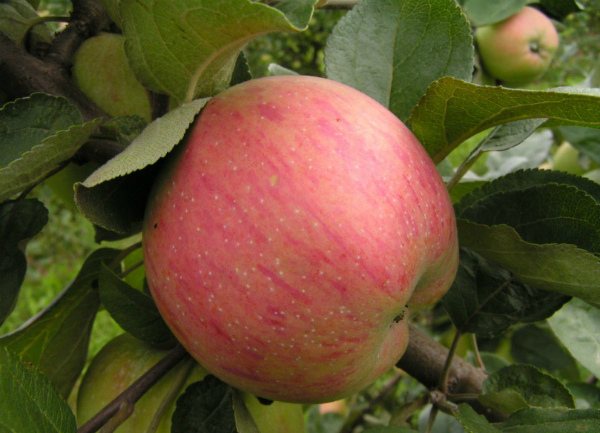

The variety is widespread throughout the territory of central Russia, where it was brought from the Baltic regions. It is also known under the names Streyfling, Autumn striped, Starostino.
Most amateur and professional gardeners consider Shtrifel a variety of folk selection. However, the famous gardener Simirenko points to the Netherlands as the country of origin of the variety.
As a native of the northern regions, Shtrifel is quite unpretentious to weather conditions and therefore competes with even the latest innovations in the field of breeding.
Therefore, it is considered suitable for growing in most regions of Russia, which is confirmed by its entry into the State Register for a number of regions:
- Northern;
- Central;
- Volgo-Vyatsky;
- Middle Volzhsky and others.
The variety does well in Belarus and Kyrgyzstan, Latvia, Lithuania and Estonia. Most areas of these regions have exactly the climate to which Shtrifel has adapted well: moderate frosts (-11 -13 ° C), abundant snow cover, short spring, humid warm summer.
Description of the variety
There are a huge number of different varieties of apple trees, but many domestic gardeners prefer the Shtrifel variety. These apples have excellent appearance and taste characteristics. Along with the high quality of the fruit, the tree itself is also unique. We will try to tell as much as possible about its features and characteristics further in the section.
Description of the fruit tree
If a huge, powerful apple tree with spreading strong branches flaunts in the garden, then we can say with confidence that this is "Shtrifel". Its height can reach 8-9 m. This giant with a lush crown can cover a huge territory, displacing other trees and shrubs.
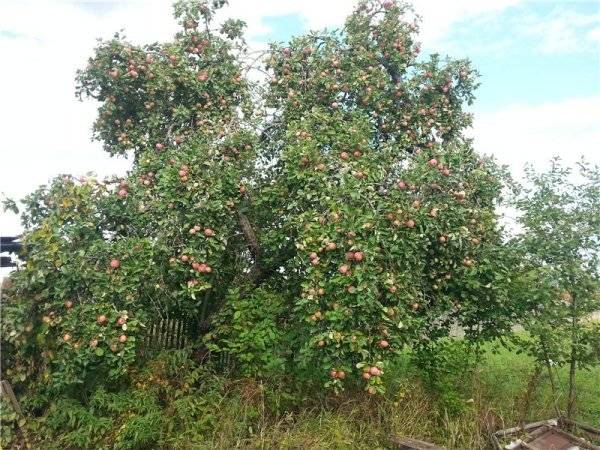

Apple trees of the Shtrifel variety are unpretentious and resistant to various climatic conditions. They can be found in the southern regions and in the north of Siberia. Fruit trees withstand the coldest winter temperatures remarkably well. And even if in some cases the crown is damaged, then its complete regeneration is observed after 2-3 years.
Apple trees "Shtrifel" actively grow greens and young shoots throughout the growing season. They need to be thinned out as the fruit tree grows. Removing excess vegetation will increase the yield of the apple tree and will be an excellent preventive measure to prevent the development of various diseases.
The adult branches of the Shtrifel apple tree are strong, drooping at the ends. They reliably hold the apple harvest, which sometimes weighs up to 430 kg. The bark of the fruit tree is dark with pronounced lenticels, slightly glossy. The buds of the Shtrifel apple tree are gray, elongated. The apple stalk is long.
The leaves of the "Shtrifel" are rounded, wrinkled. Veins are clearly visible on them. The leaf blades are covered with a characteristic fluff and curl inward. They are most densely located at the top of the shoot.
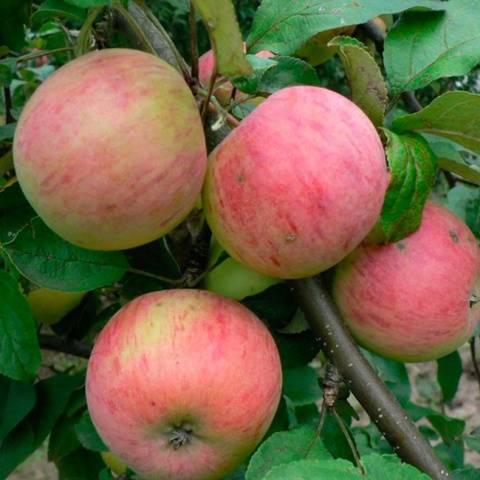

Apple variety "Shtrifel" always blooms profusely with white or slightly pink, large flowers. The first fruiting occurs only in trees aged 7-8 years.
Characteristics of apples
Having planted "Shtrifel", it is necessary to properly form the crown and take care of the tree for several years before you can taste a delicious, ripe apple. The first harvest in the amount of a few apples can be obtained 4-5 years after planting. Apples ripen in September. The average weight of fruits varies from 80 to 100 g.
The Shtrifel apple itself has a regular rounded, sometimes slightly ribbed shape. Its color is predominantly green-yellow, but it is not for nothing that the common people call "Shtrifel" an autumn striped apple.Indeed, along its entire surface, one can see longitudinal, rather bright, scarlet and red stripes. They are the hallmark of the Shtrifel variety. You can see a photo of apples in the section.
The taste of apples is wonderful: the light yellow pulp is juicy and sweet. It contains about 10% sugar and only 1% acid. Apples "Shtrifel", due to their rich microelement composition, are extremely useful. They contain 12% pectin and a large amount of nutrients. So, in 100 g of apples of the "Shtrifel" variety, there are about 130 mg of vitamins and a lot of fiber.
Read also: Cherry - Dybera black - (14 photos): description of the variety, planting and care, reviews
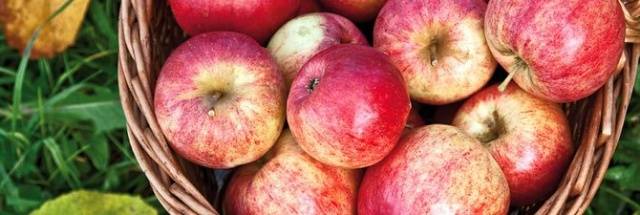

It is not without reason that a huge Shtrifel tree will occupy the area on the site: apples ripen in large quantities on its huge branches, with a total yield of up to 300-400 kg. Of course, in the early stages of cultivation, such a yield cannot be expected, therefore, in the early years, the gardener should give the fruit tree care and attention in exchange for the harvest of future years.
Disease resistance
Shtrifel apples are highly resistant to freezing, but, unfortunately, are susceptible to various fungal and viral diseases. The scab is the worst enemy for "Shtrifel". This fungal disease can affect fruits and spoil their appearance with numerous brown spots. To combat scab and other fungal diseases, it is necessary to regularly carry out sanitary pruning of trees and their treatment with folk remedies or chemicals.
Transport and storage
Having collected 300-400 kg of apples, it is unlikely that they will be quickly eaten or processed. It will also not be possible to store Strifel apples for a long time without some preparation. This can result in rapid rotting of the fruit. Therefore, if you decide to keep apples fresh, then you need to remember some rules:
- Do not wait for the apples to fully ripen and fall off the tree. You need to store slightly unripe fruits. They should be harvested in early September by carefully pulling them off the branch.
- Store "Shtrifel" in a wooden box in a cool, dry place with good ventilation.
- Apples with signs of illness or mechanical damage must not be stored.
- During storage, it is necessary to regularly revise the fruit and remove rotting specimens.
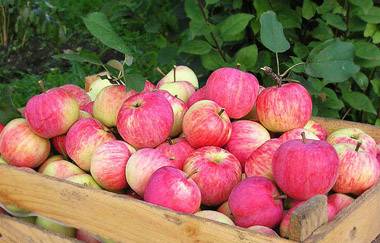

Thus, having collected a good harvest of Shtrifel apples, you should take care of the prompt processing of fruits or their sale. For storage, it is worth laying only the highest quality, slightly unripe apples.
Seasonal care
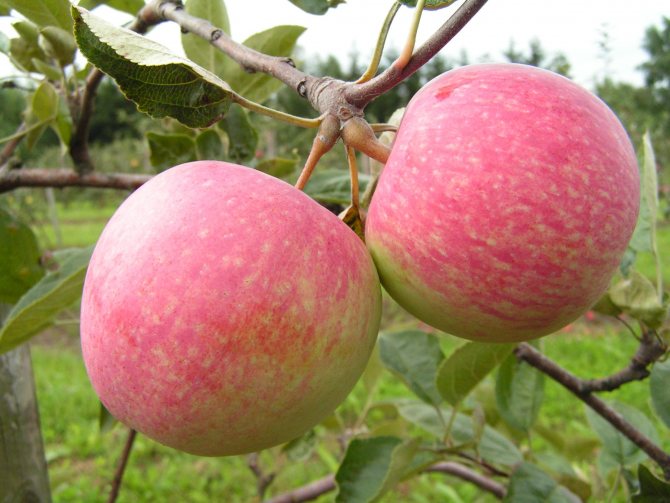

Each season requires certain types of care work - only in this case, the Shtrifel apple seedlings will take root well, be healthy and give a bountiful harvest.
When to feed?
In spring, young plants require additional nutrition for intensive growth:
- after the beginning of flowering, a urea solution is added to each square meter of the trunk circle (0.5 cups per bucket of water);
- in June, for the full formation of fruits, they are fed with microelements (0.5 g of boric acid and 2 g of copper sulfate are given per bucket);
- in July, the near-stem circle is sown with siderates, which after 40 days. dug up and leave in the soil;
- at the end of August, you can already take care of the preparation for winter - this will provide calcium chloride (30 g) and superphosphate (20 g) for each m².
When digging, it is possible to apply fertilizer in a dry form - if it is raining or the soil is very wet. Otherwise, subsequent watering is required.
How to trim correctly?
When pruning, it should be borne in mind that the Shtrifel variety is prone to intensive branch growth.
Therefore, professionals advise:
- start cutting off skeletal branches only 4-5 years after planting young apple trees;
- carry out sanitary pruning twice a year - in spring and autumn, before the start of sap flow and after the leaves are shed;
- to form a crown of a tier-sparse type: 3-4 tiers with 5-6 skeletal branches on each.
Important! Removed diseased and dried branches, like fallen leaves, should be immediately burned in the designated place - they are a breeding ground for diseases and parasites.
Protection against diseases and pests
Although Shtrifel apple trees are quite resistant to pests and diseases, it is recommended to carry out routine insecticide treatments during pruning periods. For the purpose of prevention, only spring treatment is sufficient.
If signs of damage are expressed, then the trees are sprayed with chemicals twice a year. Garlic, marigolds, chamomile planted around trees can provide additional protection.
Watering rules
Autumn striped is very demanding on moisture, its lack can affect the quality and quantity of fruits.
Therefore, during the season, 3 obligatory watering is carried out:
- in May - before flowering;
- in June - when the fruits begin to grow actively;
- in October - about a month before the onset of frost.
If the weather is very hot, and the soil is dry more than a meter deep, additional watering is carried out: for young trees - 5 buckets for each, for adults - from 8 to 10 buckets.
Important! Frequent watering can damage the roots, therefore watering is rare, but abundant: a hose with a very thin stream of water is laid under the tree - for a day.
Shelter for the winter
Apple trees Shtrifel are frost-resistant varieties. However, experienced gardeners still cover seedlings, especially in the early years.
And some carry out complete protection of the garden in one of the following ways:
- trampling snow around the trunk;
- shelter with spruce branches;
- with the help of special shields (made of boards and roofing material).
Spruce spruce branches are recognized as the best option - it not only shelters from the cold, but also protects against rodents and other pests.
Advantages and disadvantages of the variety
"Shtrifel" is a rather old variety that has imperfect genetics. It is quite difficult for him to "compete" with modern apple varieties, since he does not have high resistance to diseases, and his fruits cannot be stored for a long time. But at the same time, the popularity of the variety is the best proof that "Shtrifel" is unique and in demand due to its many advantages, which include:
- record high productivity;
- excellent unique taste of apples;
- high resistance of fruit trees to freezing;
- good transportability of fruits;
- high taste of fruit after processing.
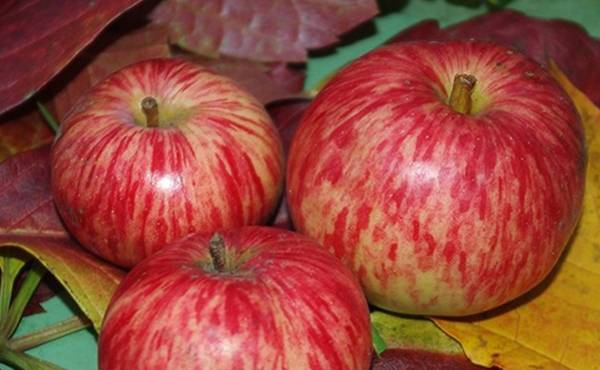

Having decided to grow "Shtrifel" on your plot, you need to clearly understand its advantages and disadvantages and think in advance about how to use the huge harvest of apples.
Features of cultivation in different regions of Russia
| Region | Growing features |
| Moscow suburbs | On loams and sod-podzolic soils, the apple tree needs rare watering. Mild winters protect against freezing. The mild climate ensures a good harvest of apples. |
| Volga region | Light soil requires abundant watering. a warm and mild climate, with proper agricultural technology, contributes to annual fruiting. Apples are often attacked by the moth. |
| Leningrad region | In mild and rainy climates, the cultivar is often affected by scab. With the right approach, preventive measures are taken against a disease that can destroy the entire apple harvest. |
Important rules for growing
It is preferable to plant a fruit tree in the spring for better survival. Before planting "Shtrifel", it is necessary to provide a place where this large plant will not shade important objects on the site or interfere with other fruit trees. The soil for "Shtrifel" should preferably be loamy or black earth. For planting, you should make a large spacious hole and prepare a nutritious soil with the presence of minerals and organics.
After planting and in the future, throughout the entire cultivation, "Shtrifel" must be watered regularly and abundantly.In hot, dry times, for every 1 m 2 of the trunk circle, there should be about 80-100 liters. water. For feeding adult trees, 0.5 tbsp should be applied to the indicated area. urea. Copper sulfate and boric acid can also be used as fertilizer in June. At the end of the fruiting period, phosphorus and potassium dressings should be added to the soil, which will help prepare the apple tree for winter and improve the taste of the fruit.


Every year in late autumn or early spring, you need to thin out the young shoots on the apple tree. This will help heal the plant. After 20-30 years of growing "Shtrifel", as a rule, there is a decrease in fruiting. In this case, it is recommended to deep prune the trees to completely rejuvenate the apple tree. Information on how to do this correctly can be found in the video:
Shtrifel is the best variety of autumn apples
Rejoicing in a ripe apple in the fall is not the dream of any amateur gardener? Among the varieties of apple trees that ripen in September-October, Shtrifel is considered to be one of the best. Officially the breeder calls him Streifling. And thanks to the intricate look of the fruit in the photo and in real life, this apple variety is also called Autumn striped. In order to root it in your personal plot, a novice gardener needs to know not only the description of the tree, but the methods of reproduction and care of the apple tree.
Read also: Ruyan strawberry: variety description, photos, reviews
Features of the Shtrifel variety
Streyfling is a variety that came to us from the Baltic states. The tree was obtained many years ago not artificially, but naturally by means of natural pollination. Despite its foreign origin, this variety is very popular in almost all of Russia, even in such difficult regions as the North, North-West.
Attention! In addition to the mentioned Shtrifel and Autumn striped, in the literature you can find the following names of this variety: Obrezkovoe, Starostino, Liflyandskoe Grafenstein.
It is a very powerful tree that can be seen from afar. The apple tree reaches 8 m in height and the same in the volume of the crown. The crown itself looks like an inverted bowler hat, thanks to the branches bent to the ground. First of all, such an appearance of an adult tree suggests that even at the planting stage, the gardener must allocate enough free space for Shtrifel.
The second feature of the variety is its unpretentiousness and frost resistance. Even if the winter turned out to be very harsh, and the tree was frozen, in 2-3 years it will completely recover on its own, and will bear fruit again.
The first fruits of Streifling will have to wait 8-9 years, and a full harvest can be obtained 15 years after planting the tree.
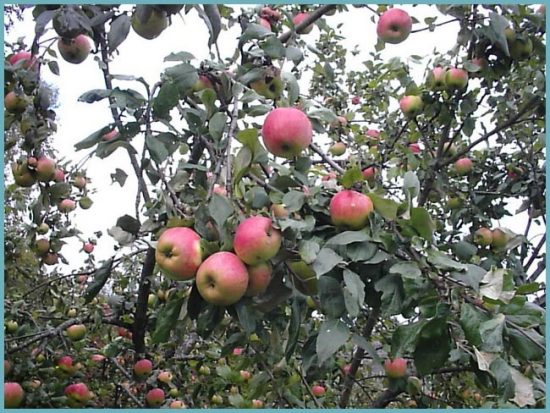

Features of reproduction and care
Most often, Shtrifel is propagated by seeds or seedlings. However, it must be remembered that trees planted with a seed method will differ from the mother's apple tree. Therefore, it is preferable to plant trees using seedlings purchased from a trusted seller. If possible, it is worth propagating this variety using lateral layers.
Caring for an apple tree of this variety has its own characteristics, which are quite simple to perform:
- The tree requires a lot of space in the garden due to its spreading crown and powerful root.
- This variety is weak and susceptible to fungal attack. Scab is especially dangerous for him. Therefore, the tree needs a plot in the garden that is well lit by the sun's rays.
- To prevent scab infestation or eliminate its signs, you need to remove fallen leaves and spoiled fruits, and bury them away from the tree. It is best to do this off-site.
- The apple tree needs to be watered abundantly, especially in hot weather. This applies to both young seedlings and mature trees. If Water is well watered, it will yield more than 100 g of fruit.
- The Streyfling variety is resistant to winter, but young apple trees need to be prepared for the winter cold.For this, the roots are additionally covered with sawdust.
- In the spring, the soil near the root should be fertilized with minerals and organic matter.
- Apple trees of this variety will not do without regular pruning. It is imperative to remove frostbitten branches after winter, broken branches after harvest. Also in the spring you need to thin out the crown to make it easier to harvest.
Diseases and pests
The apple variety Strifel is affected by a number of bacterial infections. It is susceptible to powdery mildew, gets sick with fruit rot, and is not resistant to scab. Rarely suffers from bacterial cancer. The correct approach is to carry out preventive treatment twice to prevent diseases: before bud break and with the appearance of the first foliage. Copper-containing drugs and Inta-vir are used.
A variety of pests settle on the apple tree, against which an active struggle is being waged: apple moth, sawfly, aphids, scale insects, bark beetles, ticks. The stem should be periodically inspected for pests and given "first aid measures" to the tree using folk remedies. In case of mass defeat, “chemistry” is used.
The Shtrifel variety has stood the test of time with dignity. For two centuries of its existence, apples have fallen in love with the inhabitants of the entire continent. It was and remains one of the most famous and sought-after varieties, and still reminds the taste of childhood for many people.
Apples Shtrifel and their benefits
With proper care and abundant watering, by September the apple tree gives a rich harvest of large fruits - 80-110 g. Apples Strifel are round and smooth. Sometimes it may seem that their surface is covered with wax, but this is a feature of the texture of the peel. The main color of the fruits is light green, but their sides are generously covered with pink and red-orange stripes. But closer to November, the apples turn yellow, and the stripes on them turn brown. It is at this time that it is best to harvest. Although, this can be done in September.


The flesh of the fruits of this variety is pale yellow in color, and near the skin itself it acquires a pale pink color. The apples have a sweet and sour taste with spicy notes. In addition, these fruits are very healthy due to their unique composition:
- 0.8% vitamin C;
- 10% sucrose;
- 12% pectin;
- 1% minerals;
- 2% P-active substances.
One adult tree can harvest 200-300 kg of excellent quality apples.
Shtrifel has one drawback - the time it takes for full fruiting. The gardener will have to wait at least 15 years before the apple tree gives a full harvest. But these will be apples so delicious that they are worth all the effort and expectation.
Chemical composition and application
The pulp of the fruit is very juicy, has a slight yellowness and friability. The taste is sweet and sour, harmonious.
The parameters of the chemical composition of ripe fruits are as follows:
- the total amount of sugars is 10%;
- the content of titratable acids slightly exceeds 0.5%;
- the content of ascorbic acid is slightly more than 8 mg per 100 g of pulp;
- the content of pectin substances does not exceed 12%.
It should be borne in mind that the amount of vitamin C is much higher in fruits that were collected in northern latitudes. The fruits can be dried and preserved.
We also suggest that you familiarize yourself with the varietal characteristics of the Jonagold apple tree.
